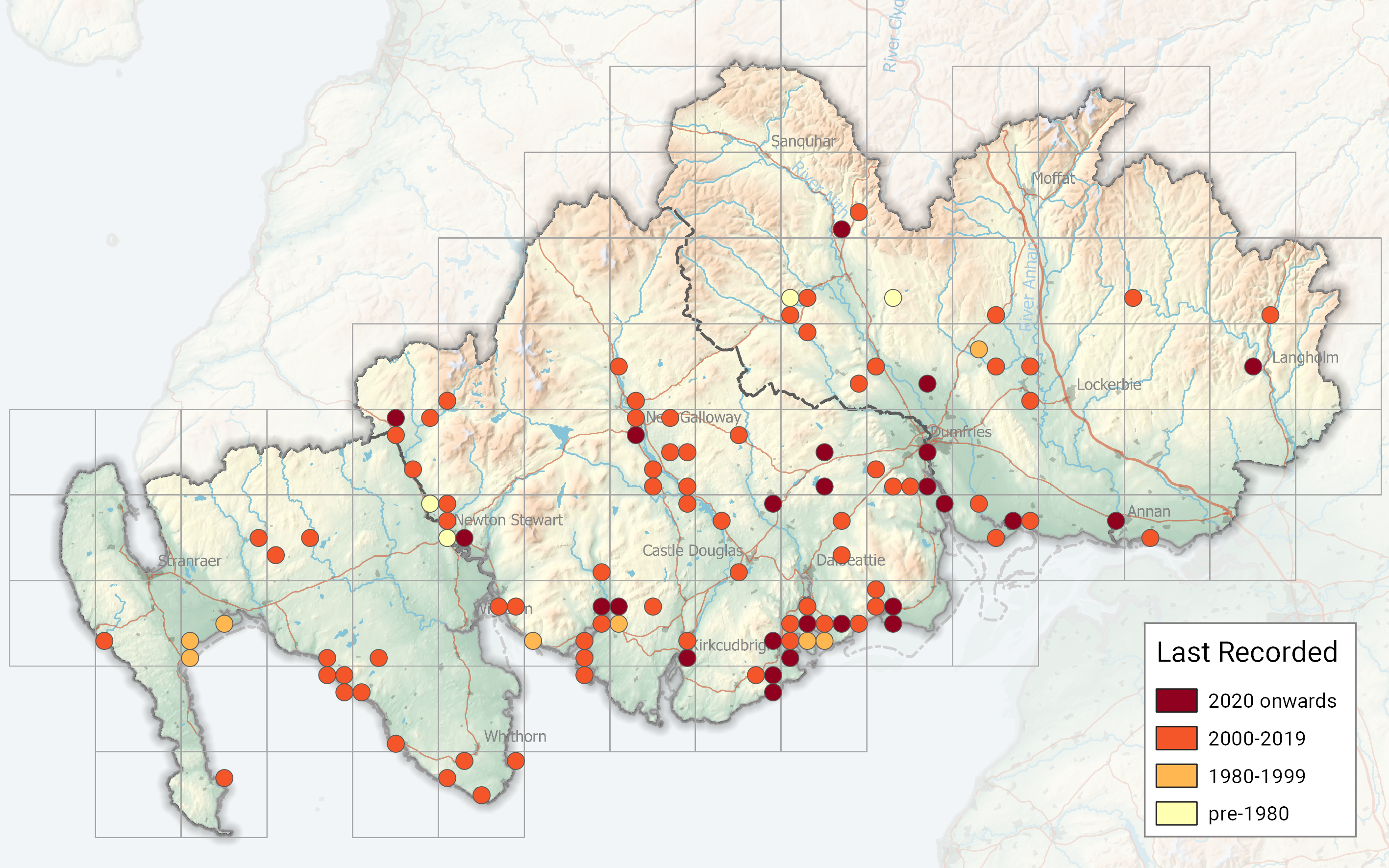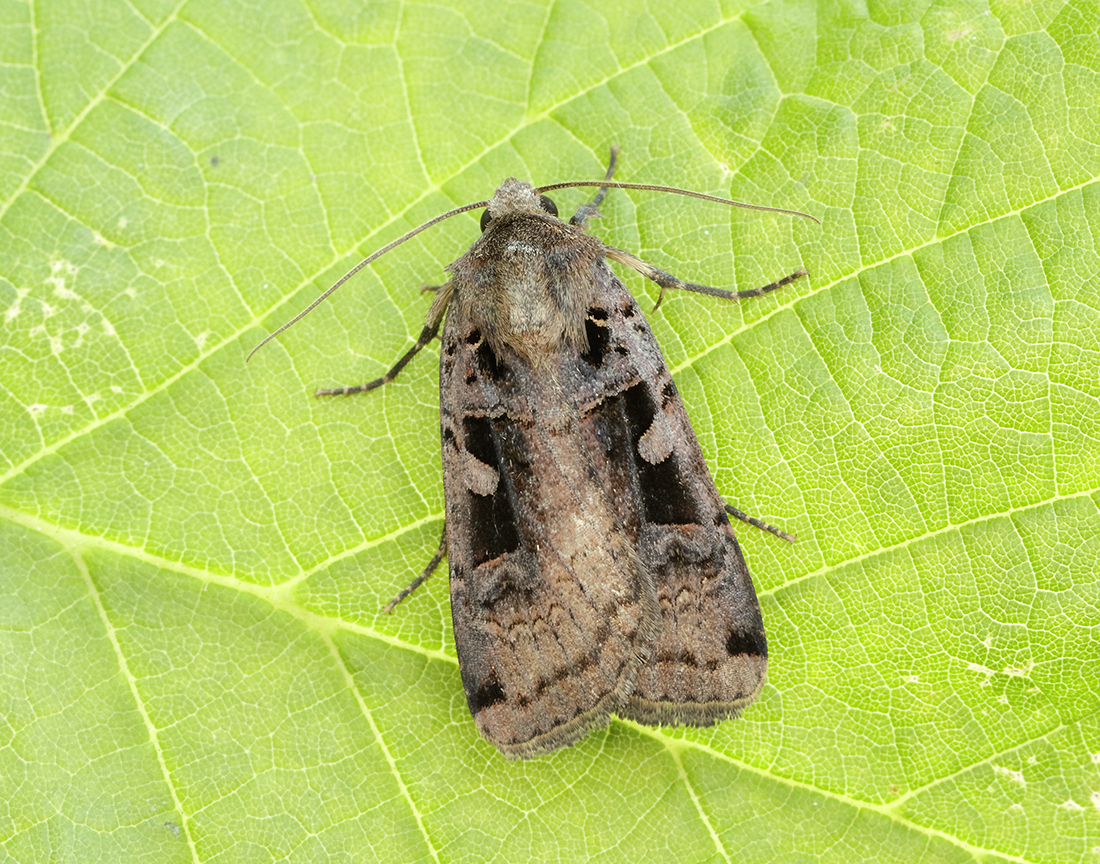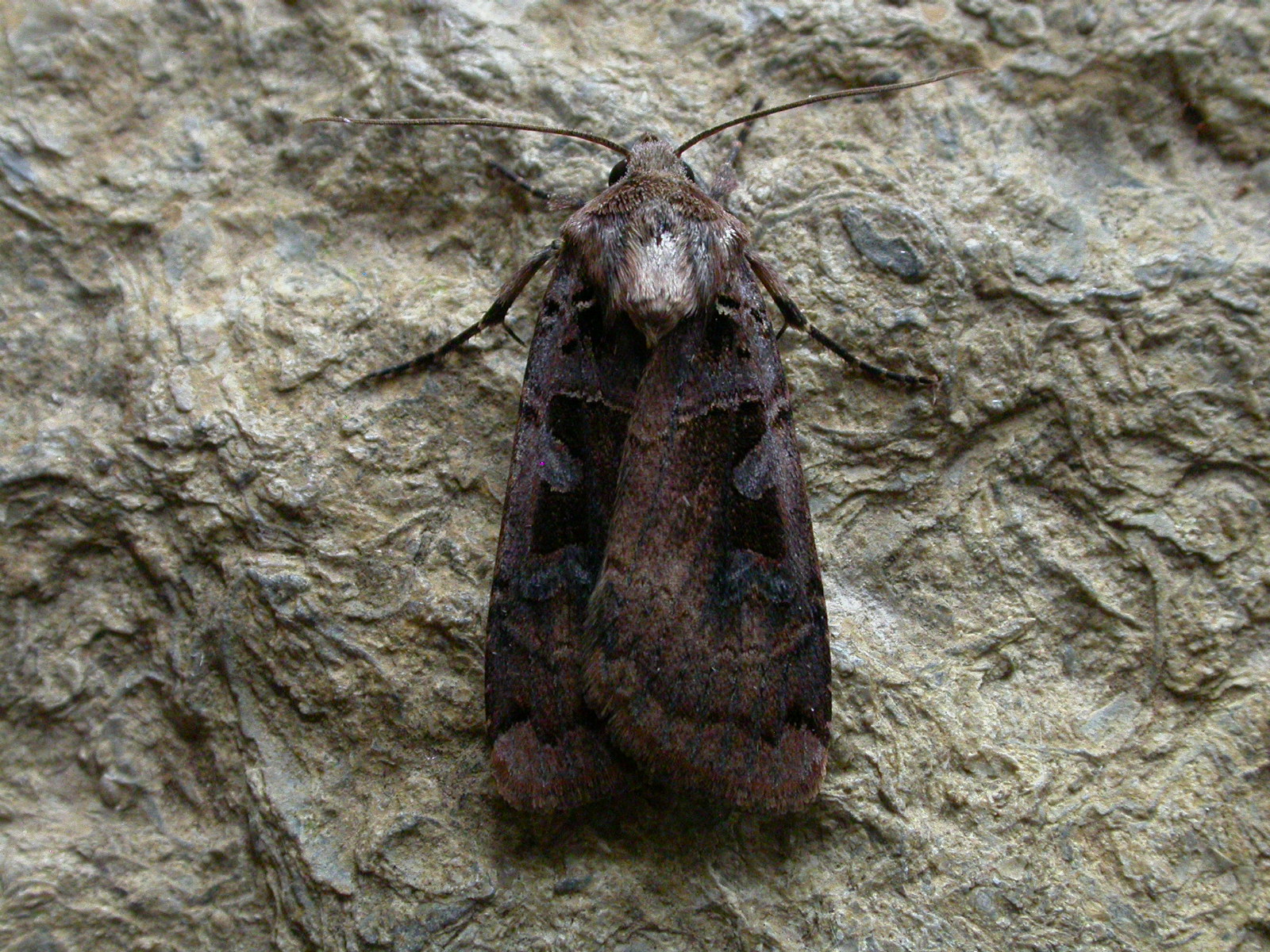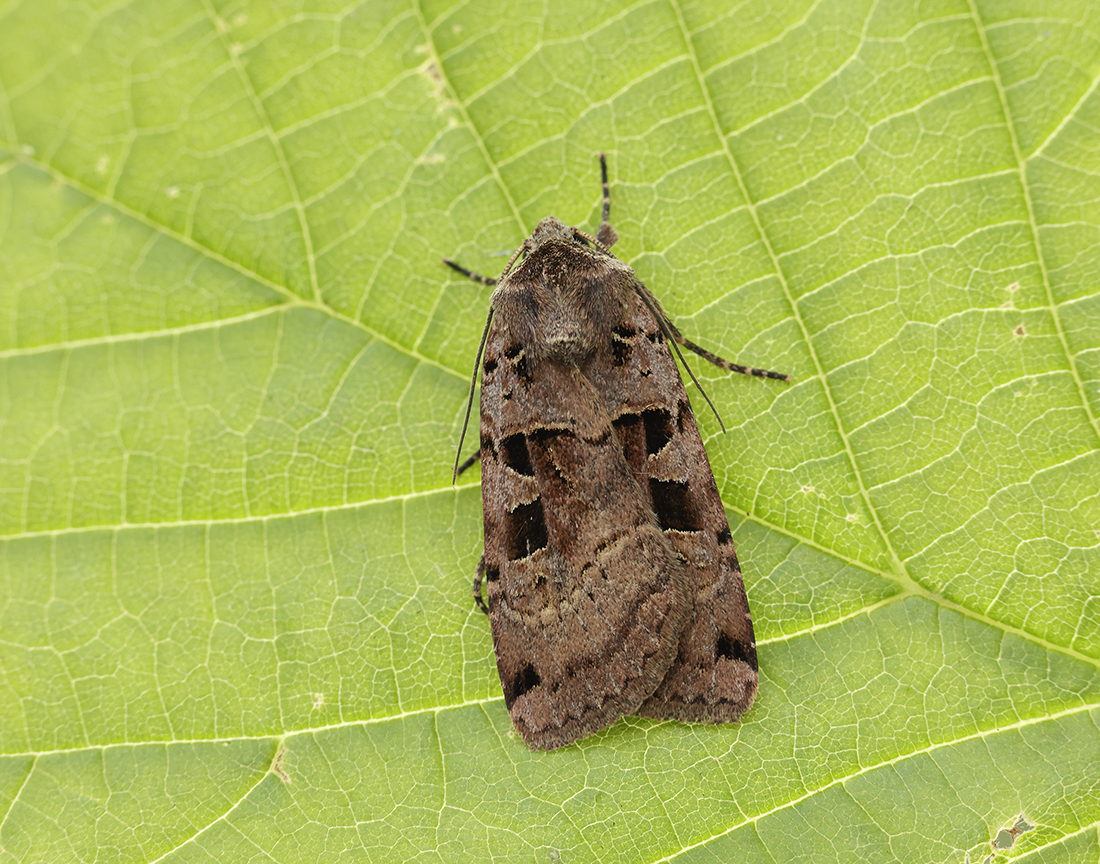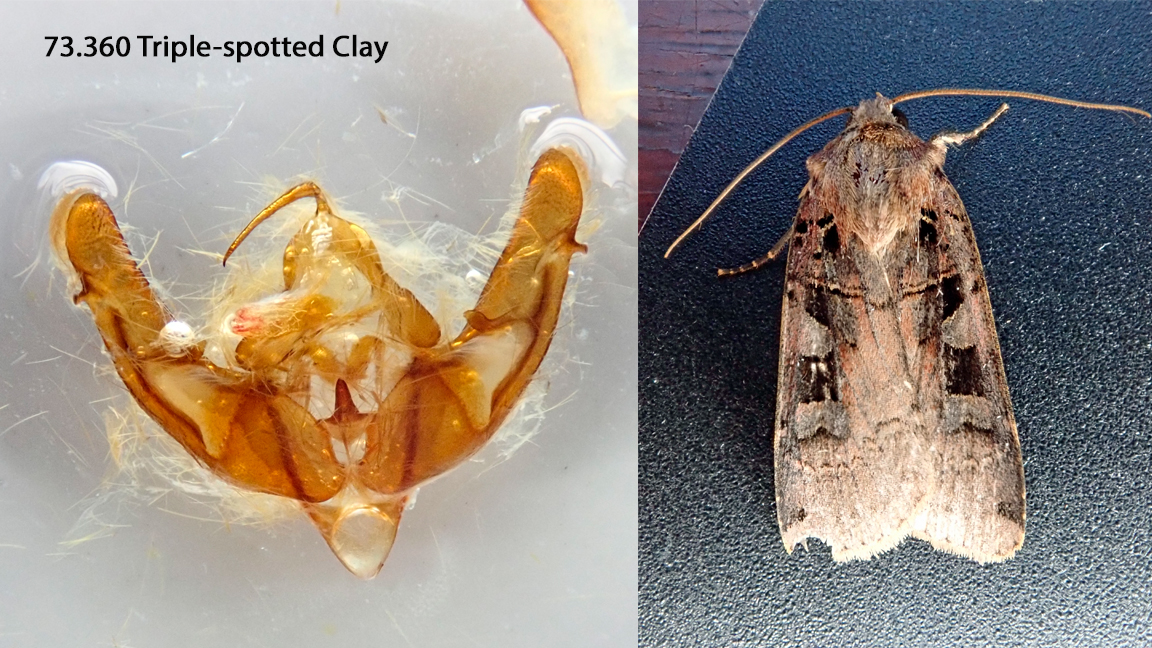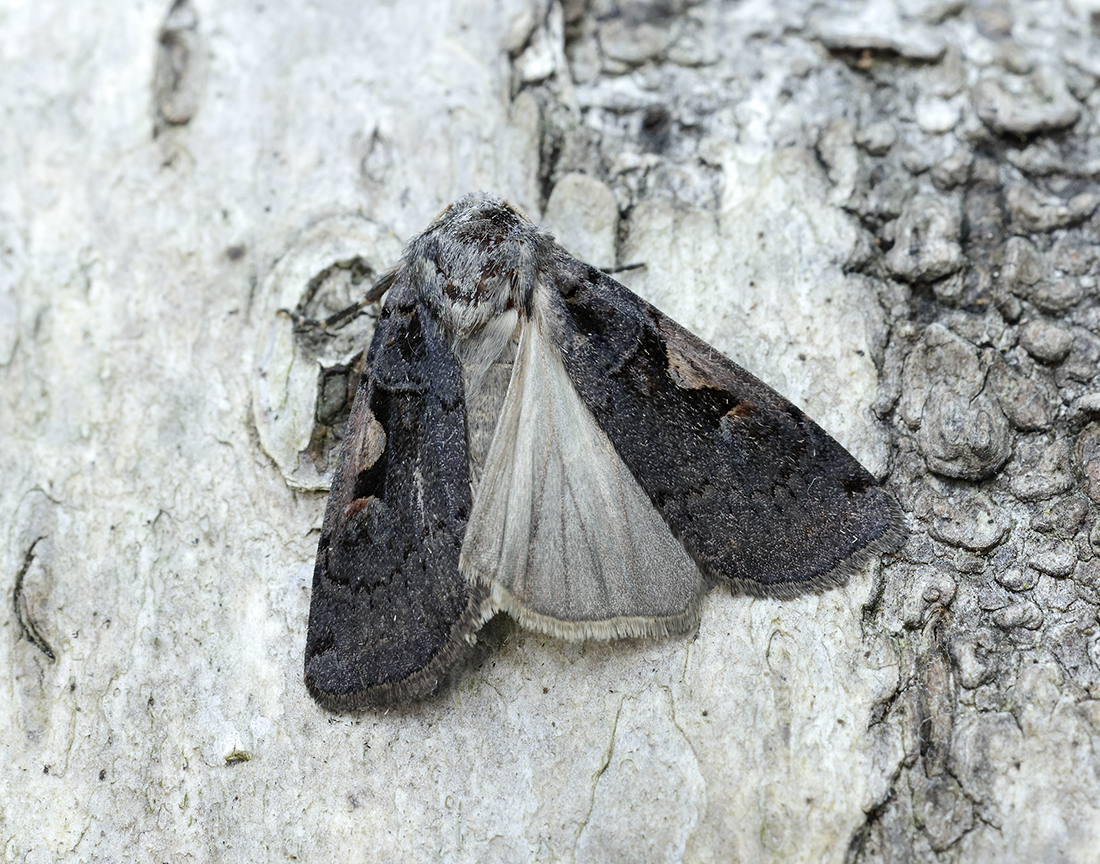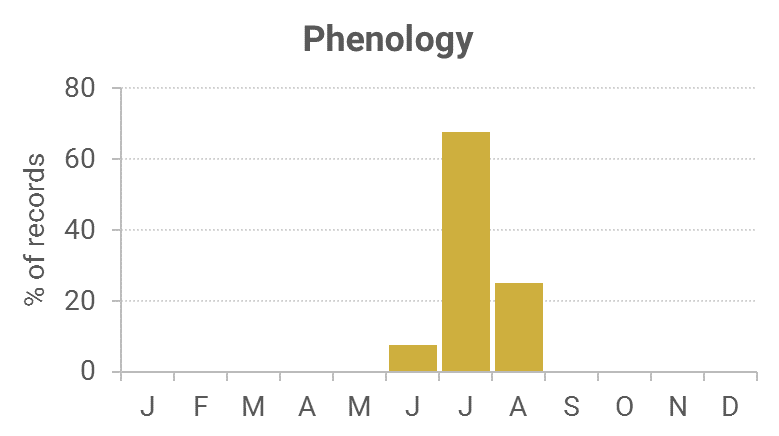Identification
Similar to Double Square-spot and care required with identification. Triple-spotted Clay tends to rest with wings overlapping producing a more slender appearance. Ground colour is reddish or purplish brown, so a darker moth than Double-square Spot. Hindwing is pale grey or light brown. More information here and here.
Recording Method.
Attracted to light. Also feeds at sugar and flowers.
Life cycle
One generation. Overwinters as a larva during August to May, hiding by day and feeding at night. Pupation takes place at ground level.
Larval foodplants
Primrose, Dogwood, sallows and birches.
Habitat
Damp and open broadleaved woodland, but also bushy fens.
History
It was first found on the 24th June 1949 in Mabie Forest by David Cunningham. Further records followed shortly after from Sir Arthur Duncan from Closeburn, Tynron, Colvend and Southerness.
During 1974-93 five of the seven Rothamsted stations recorded 135 records between them, Bridge of Dee and Waterside Mains not recording it.
From 1988 to 2010 the regular trapped sites at Carsfad at Dalry and Cally Woods recorded nearly a third of the 130 records, with the rest coming from scattered sites across the region.

